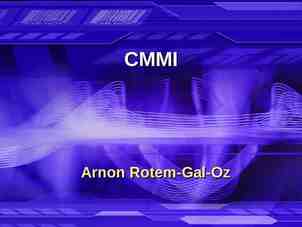BUSINESS PLAN TEMPLATES Set up for success with strategic planning
19 Slides724.81 KB
BUSINESS PLAN TEMPLATES Set up for success with strategic planning frameworks, including Lean Canvas, SWOT Analysis, Pirate Funnel, and more.
A BUSINESS PLAN WITH A LEAN CANVAS Lean canvas is a one-page business plan template created by Ash Maurya. It’s designed to create a snapshot of your business idea, distill the essence of your product or service, and break it down into key parts. Check out a completed example on the next page and then try filling out the blank lean canvas for your own business on the page after that
Problem Solution Unique Value Unfair Advantage Customer Segments What problems are people How will you solve these Proposition What separates you from Create 3 to 4 personas of the facing? List their top 3 problems? Write down a How will you turn an unaware competitors? What makes people you can help. frustrations. solution for each problem. visitor into an interested you ahead of the pack? Visualize these people who customer? Create a clear and will turn to you for solutions. compelling one-liner message you want to send across. Existing Alternatives Key Metrics High Level Concept Early Adopters How does your product or Channels What are the specific How are these problems How will you measure the service fit into the grand How will you reach your characteristics of your early solved today? This can be a success of your product or scheme of things? target consumers? Direct adopters? direct competitor to what you service? List the key metrics. marketing, social media, ads, are offering or the existing partnerships — identify the ways people are employing to effective ways to reach them. address their problems. Cost Structure Revenue Streams What are the fixed and variable costs to launch your product or service? Consider the cost What money sources will grow your money? How will you generate income? Show a at each stage from setting up a website, hiring employees, production, marketing, and pricing model of your product or service and include other revenue sources, such as sales bringing them to consumers. and subscription fees.
Strengths FIND YOUR COMPETITIVE POSITION WITH A SWOT ANALYSIS What advantages does your company have? What do you do better than anyone else? What are your unique selling points? Weaknesses What areas can you improve on? What does your company lack? What things do your competitors do better than you? Opportunities What changes in technology, policies, and social patterns can be a A SWOT analysis maps out your company’s path towards your goals by identifying strengths and growth opportunity for the company? weaknesses (internal attributes) and opportunities and threats (external conditions). Uncover your company's competitive position with these guiding Threats questions. Use the blank framework on the next What are the obstacles to your company’s growth? Who are your page to start filling out your own SWOT analysis. competitors? What changing factors can threaten your company's position?
VISUALIZE YOUR COMPANY'S WEAK POINTS WITH A PIRATE FUNNEL The Pirate Funnel is a customer-lifecycle framework by Dave McClure that shows what you need to focus on to optimize your marketing funnel. It is called a Pirate Funnel because the first letters spell out AAARRR for Awareness, Acquisition, Activation, Retention, Referral, and Revenue. Use the blank framework on the next page to start filling out your own pirate metrics.
AWARENESS ACQUISITION ACTIVATION RETENTION REVENUE REFERRAL How will you introduce your company to your potential customers? Examples: impressions, click-through rate, visits, and social media metrics. Where are your potential customers coming from? What channel is driving the most valuable traffic for your company? Examples: new leads, email subscribers, resource downloads, support and sales chats. How will your potential customers try your product or service for the first time? How will you make them realize the true value of your product or service? Examples: new trial signups, product sales, activation after app download. How many of your customers are you retaining? Why are you losing others? Examples: customer acquisition rate and customer churn rate. How can you increase revenue? What’s your monetization plan? Examples: customer acquisition cost and customer lifetime value. How can you turn your customers into advocates? What’s your systematic process to generate referrals consistently? Examples: Net Promoter Score, referrals, and social shares.
4Ps of Marketing POSITION YOUR PRODUCT OR SERVICE WITH THE 4PS OF MARKETING The 4Ps of Marketing illustrates how product, price, place, and promotion work together when a product or service is launched to customers. It is created by Neil Borden in the 1950s to demonstrate the ways companies use advertising and marketing techniques to convert potential buyers into actual customers. Use the blank framework on the next page to start filling out your own 4Ps of Marketing.
Price is what customers pay for a Product refers to the good or service you are offering to customers. What Product BRAND FEATURES PACKAGING needs does this product fulfil? What frustrations does it address? What makes it compelling to customers such that they will believe they need to have it? Price PRICE DISCOUNTS BUNDLING DEALS CREDIT TERMS product or service and it takes into account the cost of production. What is the value of the product or service to customers? Are there established price points for this product or service in the market? How will this price compare with competitors? Place refers to how and where your Promotion ADS PRS OCIAL MEDIA EMAIL SEARCH ENGINEVIDEO Promotion is how you will get the word out about your product or service to your target customers. It includes advertising, public relations, and promotional strategies. Product STORES WEBSITE ONLINE MARKETPLACE customers will look to see your product or service. It also considers how you will deliver the product or service to them. Will it be in a physical store or online? What will be the distribution channels?
ESTABLISH YOUR PRODUCT'S APPEAL WITH A PRODUCTMARKET FIT PYRAMID Product Market Product-Market fit is a concept coined Marc Andreessen and refers to your start-up being in a good market with a product that can satisfy that market. Finding Product-Market fit is the difference between struggling to find customers and having them knocking down your door for your product. This framework will help you identify target customers and their underserved needs and test and change your key market hypotheses to arrive at product-market fit. Use the blank framework on the next page to start filling out your own Product-Market Fit Pyramid.
1.Identify your target customer Use market segmentation and create personas to get a picture of the people you are targeting. No need to be precise. A high-level UX hypothesis is enough to start testing, and revise as you go. 2.Know “undeserved” needs What needs do they have that are adequately met? Feature Set 3. Define your value proposition How you will meet your customers needs better than your competitors? Of all the needs you can address with your product, Value Proposition which ones will you focus on? 4. State your MVP feature set Build only what is needed to create enough value for your target Product-Market Fit customers to validate the direction of your product. 5. Make your MVP prototype Create a version of your product to test your MVP hypotheses with Underserved Needs your customers. Apply user experience principles to receive feedback and to bring your feature set to life for your customers. 6. Test it out to your customers Target Customer Ensure you are testing with your target market so feedback received will help iterate your product in the right direction. Making your test group answer a survey is a great way to ensure they possess the attributes of your target customer.
KNOW THE STAGES OF THE CUSTOMER JOURNEY WITH A MARKETING FUNNEL A Marketing Funnel maps your company’s marketing activities at each stage of the customer Marketing Funnel journey. It starts with making your target audience aware of your solution, then guiding them through an evaluation process and finally leading them to make a purchase. The goal is to create a system, which is measurable at every level of the journey. Use the blank framework on the next page to start filling out your own marketing funnel.
TOFU (Top of the Funnel) Activities that facilitate awareness. Make your target audience aware of the problem you’re addressing and how you’re solving it Social media post and ads Email marketing Promotional video Press Release MOFU (Middle of the Funnel) Discounts Activities that facilitate evaluation. Convert those who are aware into leads Free trial Exclusive offers Event BOFU (Bottom of the Funnel) Activities that facilitate conversion. Guide the leads in making an informed purchase decision Demo Feedback Success stories Comparison sheets
Product Market STATE YOUR COMPANY'S MISSION, VISION, AND VALUES Product-Market fit is a concept coined Marc Andreessen and refers to your start-up being in a good market with a product that can satisfy that market. Finding Product-Market fit is the difference between struggling to find customers and having them knocking down your door for your product. This framework will help you identify target customers and their underserved needs and test and change your key market hypotheses to arrive at product-market fit. Use the blank framework on the next page to start filling out your own Product-Market Fit Pyramid.
MISSION, VISION, AND VALUES Mission Vision Values Mission is the reason why Vision is what success looks These are the guiding your company exists. It is the like for your company. It is principles that will influence visible and tangible effect what your company aspires your actions to fulfill your you want your company to to be in the future. It is how company's mission and create for your customers the world will look like once vision. and the world. you've accomplished your mission.
Strategy, Tactics,and Execution ILLUSTRATE YOUR COMPANY'S STRATEGY, TACTICS, AND EXECUTION A strategy, a list of tactics, and knowing how to execute them are integral in the attainment of your company goals. Use the blank framework on the next page to start filling out your own strategy, tactics, and execution
STRATEGY, TACTICS, AND EXECUTION Strategy Tactics Execution Strategy is how your Tactics are the specific Execution is how you will methods, time, and methods, resources, and employ the tactics you’ve resources come into play to techniques you will need to chosen. It includes fulfil your company mission accomplish your strategy. measurable outcomes, such and vision. as timelines and deliverables.
DEVELOP DEEP INSIGHTS ABOUT YOUR CUSTOMERS USING BUYER PERSONAS Buyer Personas Buyer personas are semi-fictional representations of your target customers. These personas are based on market research and real data about the people you are targeting. Two to three buyer personas are ideal. The more detailed the buyer persona, the better. Use the blank framework on the next page to start filling out your buyer personas.
Demographics Buying Roles Goals and (Gender, age, marital (Decision makers, Responsibilities status, employer) influencers) Needs Objections Frustrations Buyer's Journey Channels Sources of (Awareness, (Social media, other digital consideration, purchase, activities,non-digital information advocacy) activities) (Content that influences purchasedecisions)
Free Resources Use these free and recolourable icons and illustrations in your Canva design.
























